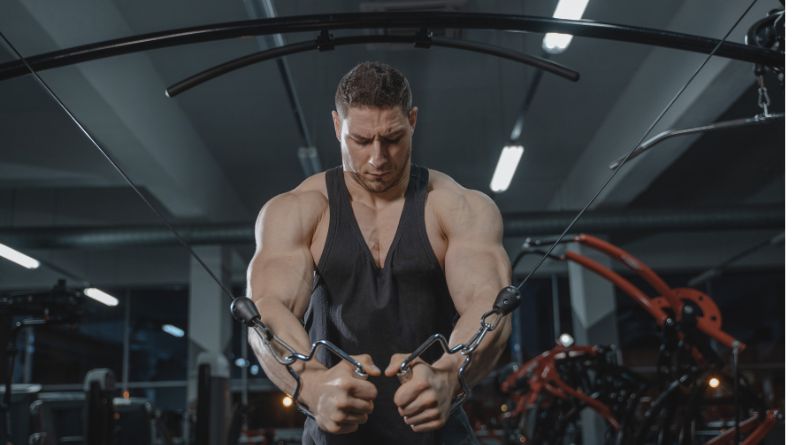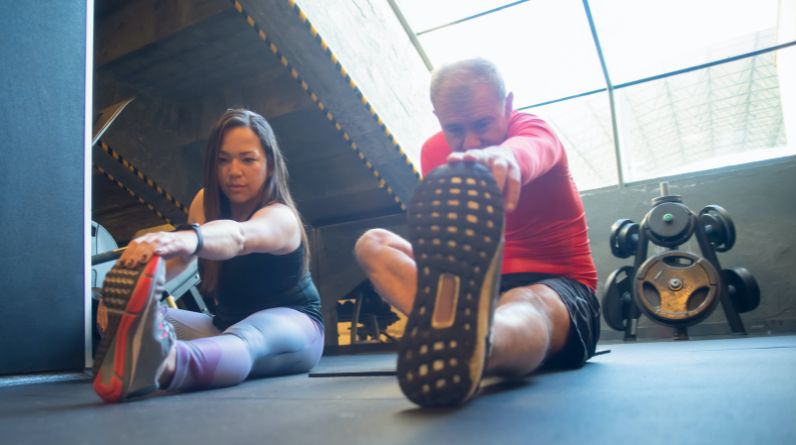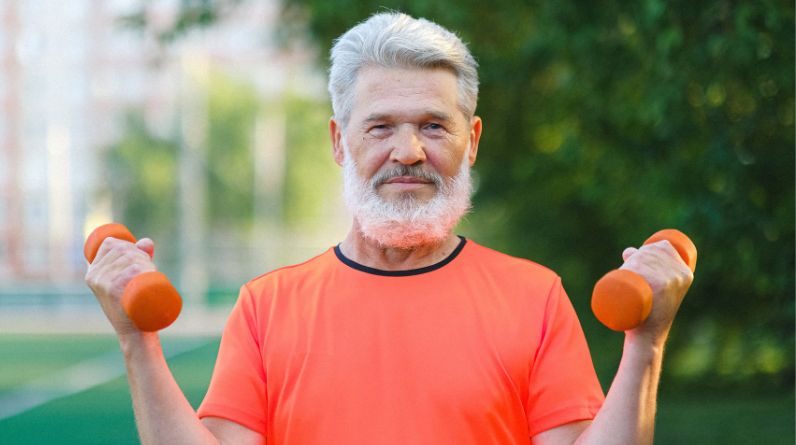
The goal of a well-defined and muscular chest is popular among exercise enthusiasts. Developing the pecs not only improves the appearance of the upper body but also contributes to functional strength. We’ll look at successful tactics for chest muscle development in this thorough guide, including everything from training regimens to dietary considerations.
The Anatomy of Chest Muscles
It’s critical to grasp the anatomy of the chest before going into techniques. The pectoralis major and minor are the key muscles targeted in chest workouts. The bigger of the two, the pectoralis major, is made up of a clavicular head (upper chest) and a sternal head (lower chest). The pectoralis minor is a muscle that lies beneath the pectoralis major and helps with shoulder movement.
Effective Chest Muscles Workout
1. Bench Press
The traditional bench press is a basic and compound activity that works the entire pectoral muscle. It is frequently regarded as the foundation of chest training. Bench press variations such as incline and decline allow you to target certain parts of the chest, fostering balanced development.
2. Push-Ups
Push-ups are an excellent bodyweight workout that works the chest, shoulders and triceps. This exercise may be tailored to different fitness levels, making it suitable for both beginners and advanced fitness enthusiasts.
3. Dumbbell Flyes
Dumbbell flyes are an isolation exercise that focuses on the outside of the chest. When compared to other chest workouts, using dumbbells in this movement provides for a more thorough range of motion. This exercise is useful for defining and shaping the chest muscles.
4. Cable Crossover
Throughout the activity, cable crossovers maintain consistent tension on the chest muscles. The cable system promotes muscle engagement and growth by allowing for a smooth and controlled range of motion. This workout is especially good for people who want to sculpt and define their chest.
5. Chest Dips
Chest dips are great for working the lower chest. This bodyweight workout uses parallel bars to target not just the chest muscles but also the triceps and shoulders. It’s a great method to mix up your chest training regimen and build strength in different muscular areas.
Strategies for Optimal Chest Development
1. Progressive Overload Principle
The progressive loading principle is the cornerstone of muscular growth. This entails gradually raising the resistance or intensity of your workouts. This could include increasing the weight of your lifts, increasing the amount of repetitions, or changing the speed of your exercises. This constant effort stimulates the muscles, encouraging growth and strength.
2. Variation in Rep Ranges
A variety of rep ranges is essential for overall chest development. Lower rep ranges with heavier weights emphasise strength, whereas higher rep ranges promote muscle endurance and hypertrophy. This variant exposes your chest muscles to a variety of stimuli, fostering overall growth.
3. Focus on Form
Proper form is essential for chest development. Maintaining proper technique during each exercise maximises muscle engagement and lowers the risk of injury. To properly target the chest, focus on controlled motions, especially in compound workouts like bench presses.
4. Consistency is Key
Consistent effort is required to develop a well-defined chest. Maintain a consistent training plan that includes focused chest exercises. Allow enough time between sessions to recover in order to avoid overtraining and promote muscular growth.
5. Include Compound Movements
Compound exercises should be a large portion of your chest routine. Bench presses, push-ups, and dips work many muscular groups at the same time, increasing overall upper body strength. These workouts also cause the production of growth hormones.
6. Target Different Angles
Change up your chest training by integrating exercises from various angles. Incline and decline movements target specific parts of the chest, promoting a well-defined and balanced development. This method aids in the prevention of musculoskeletal imbalances.
7. Prioritize Recovery
Rest allows muscles to develop and repair. Prioritise healing by getting enough sleep and including rest days into your workout programme. This gives your chest muscles a chance to heal and adapt to the intensity of your workouts.
8. Balanced Nutrition
A healthy diet is essential for chest development. Make sure you get enough protein, which is essential for muscle growth and repair. Healthy fats and carbohydrates give the energy required for strenuous exercise. Nutritional health promotes general recovery and development.
9. Mind-Muscle Connection
During your chest workouts, focus on developing a strong mind-muscle connection. With each repetition, concentrate on feeling the chest muscles tense and expand. This mental focus improves muscular engagement, ensuring that you target the chest efficiently during exercises.
10. Supplementation
Consider adding products like protein powder or branched-chain amino acids (BCAAs) to your diet. These supplements aid in muscle rehabilitation and growth, especially when nutritional intake is inadequate. Before introducing supplements into your routine, consult a healthcare or fitness professional.
Frequently Asked Questions
1. Is it necessary to lift heavy for chest development?
Lifting heavy weights is good for strength, but it’s not the only way to build your chest. A combination of hard lifting and larger rep ranges ensures complete muscle stimulation. For optimal growth, focus on progressive loading, progressively increasing resistance to challenge your chest muscles.
2. How often should I train my chest?
Training frequency depends on individual factors like recovery and overall workout routine. For most, training the chest 1-2 times per week with adequate rest between sessions allows for optimal recovery and growth.
3. Can I build my chest without weights?
Absolutely. Bodyweight exercises like push-ups, chest dips, and various push-up variations can effectively build chest muscles. These exercises engage your chest and can be adjusted to different fitness levels, making them versatile tools for chest development.
4. What role does diet play in chest development?
Diet is crucial for muscle development, including the chest. Ensure a balanced diet with sufficient protein, healthy fats, and carbohydrates. Protein, in particular, is essential for muscle repair and growth. Caloric intake should align with your fitness goals, whether it’s muscle building or leaning out for chest definition.
5. Should I use machines or free weights for chest exercises?
Both machines and free weights have benefits. Free weights, like dumbbells and barbells, engage stabilizing muscles, promoting overall strength. Machines provide controlled movements, isolating the chest. A combination of both in your workout routine can offer a well-rounded approach.
6. Can women follow the same chest workout routines as men?
Yes, women can follow similar chest workout routines as men. The principles of chest development, including progressive overload and a mix of exercises, apply to both genders. Tailor the weight and intensity to your fitness level, focusing on challenging your muscles progressively.
7. How long does it take to see results in chest development?
Results vary based on factors like genetics, workout intensity, and consistency. With a well-structured chest training routine and a balanced diet, you may start noticing changes in muscle tone and definition within 8 to 12 weeks.
8. Are isolation exercises necessary for chest development?
While compound exercises like bench press are foundational, isolation exercises like flyes can target specific areas of the chest for more defined muscles. Including a mix of both in your workout routine can contribute to a well-developed chest.
9. Can I train chest every day?
Training the same muscle group every day is not advisable. Muscles need time to recover and grow. Allow at least 48 hours between chest workouts to ensure proper recovery and prevent overtraining.
10. Is cardiovascular exercise necessary for chest development?
While cardiovascular exercise doesn’t directly target the chest, it contributes to overall health and fitness. Cardiovascular activities support heart health, which is crucial for sustained, effective workouts, including those focused on chest development.





